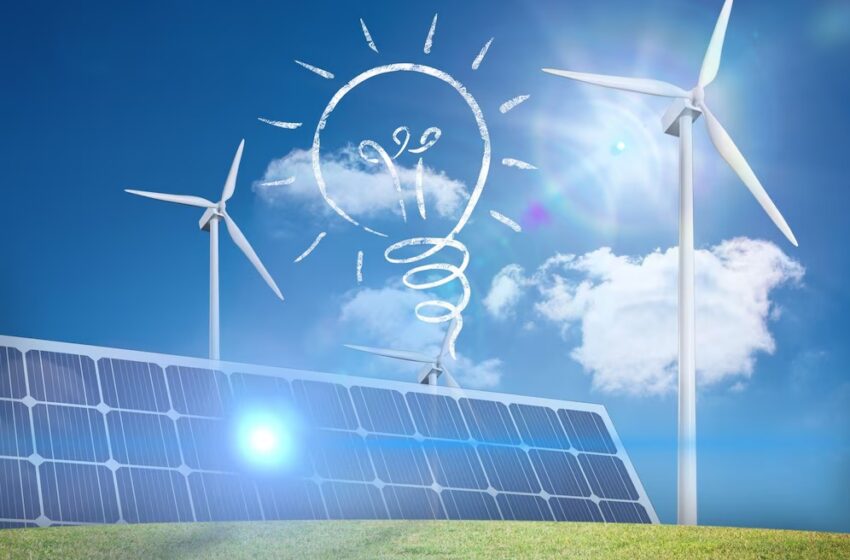Renewable Energy Technologies and Their Role in Mitigating Climate Change

In the face of escalating climate change impacts, the transition to renewable energy technologies has emerged as a critical pathway toward a sustainable future. This article delves into the pivotal role these technologies play in mitigating climate change, highlighting key innovations and the path forward for societies worldwide.
The Urgency of Action
Climate change, driven by the relentless rise in greenhouse gas emissions, poses an existential threat to global ecosystems, economies, and communities. The scientific consensus underscores the urgent need to shift away from fossil fuels— the primary culprit behind carbon emissions—and embrace cleaner, sustainable energy sources.
The Vanguard of Change: Renewable Energy Technologies
Renewable energy technologies harness natural processes to generate power, offering a virtually inexhaustible and cleaner alternative to fossil fuels. Key players in this arena include:
- Solar Power: Utilizing photovoltaic cells to convert sunlight directly into electricity, solar power stands as a beacon of renewable energy potential. Innovations in solar panel efficiency and the advent of solar farms have catapulted this technology to the forefront of climate change mitigation efforts.
- Wind Energy: By capturing the kinetic energy of wind through turbines, wind energy provides a powerful tool for reducing reliance on coal and natural gas. Offshore and onshore wind farms are expanding globally, driven by advancements in turbine technology and grid integration.
- Hydropower: The oldest and one of the most reliable renewable sources, hydropower generates electricity from flowing or falling water. Modern hydropower plants, ranging from massive dams to micro-hydro installations, offer flexible, low-emission power solutions.
- Geothermal Energy: Tapping into the Earth’s internal heat, geothermal systems supply both electricity and direct heating capabilities. This underexploited technology holds immense potential, particularly in volcanic regions, for sustainable energy production.
- Biomass Energy: Converting organic materials into electricity, heat, or biofuels, biomass energy can reduce waste while offering a renewable power source. However, its sustainability is contingent upon responsible sourcing and advanced technologies to minimize emissions.
The Impact on Climate Change Mitigation
Renewable energy technologies are pivotal in reducing global greenhouse gas emissions. By replacing carbon-intensive energy sources, renewables have the potential to significantly cut the volume of carbon dioxide released into the atmosphere. Moreover, the decentralization of energy production through renewables can enhance energy security, reduce energy poverty, and contribute to a more resilient and sustainable energy system worldwide.
Overcoming Challenges
Transitioning to a renewable-based energy system is not without challenges. Key obstacles include:
- Economic and Financial Barriers: Despite falling costs, the initial investment in renewable energy infrastructure can be high. Financial incentives and policy frameworks are crucial to encourage investment in renewables.
- Technological and Infrastructure Limitations: Integrating renewable energy into existing power grids requires advancements in storage technologies and grid infrastructure to manage the variability of wind and solar power.
- Policy and Regulatory Hurdles: Effective policies are essential to support the growth of renewable energy. This includes subsidies for renewable technologies, carbon pricing mechanisms, and regulations that encourage clean energy adoption.
The Path Forward
Mitigating climate change through renewable energy technologies requires concerted efforts from governments, businesses, and individuals. Key strategies include:
- Investing in Research and Development: To overcome current limitations and reduce costs, continued investment in R&D is essential.
- Implementing Supportive Policies: Governments must enact policies that facilitate the transition to renewable energy, including financial incentives, renewable energy targets, and supportive regulatory frameworks.
- Promoting Public and Private Partnerships: Collaboration between the public and private sectors can accelerate the deployment of renewable technologies and infrastructure.
- Educating and Engaging Communities: Public awareness and community engagement are critical to fostering acceptance and support for renewable energy projects.
Conclusion
Renewable energy technologies offer a viable and effective solution to the pressing challenge of climate change. By harnessing the power of the sun, wind, water, and Earth’s heat, we can pave the way for a sustainable, low-carbon future. The transition to renewable energy not only mitigates the impacts of climate change but also heralds a new era of innovation, economic growth, and environmental stewardship. As we stand at the crossroads of climate crisis and technological advancement, the path to a renewable energy future is clear. It is incumbent upon us all to take bold steps forward, embracing the technologies that hold the key to a sustainable planet.
(Nominate Now: Join us to spotlight your achievements! Be part of the elite in the business and finance community. Exciting opportunities await!)






